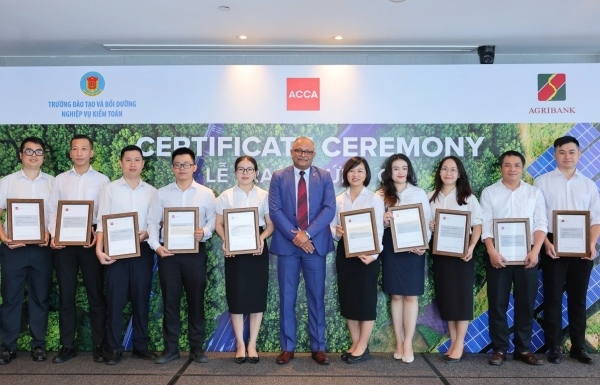Cbank’s easing policy to boost growth by 5.1 pct: HSBC
Cbank’s easing policy to boost growth by 5.1 pct: HSBC
With monetary easing policies underway, Vietnam’s economy may grow only 5.1 percent in 2012, though the most severe period of turbulence is almost over, said the latest report on Vietnam’s economy from the Hong Kong-Shanghai Banking Corp (HSBC).

Even if the impact of easing measures filters through in the second half of this year, the economy will likely expand by only 5.1 percent for the whole year, up slightly from 5 percent in H1/2012, said HSBC’s “Vietnam at a glance” report.
Prices, represented by the consumer price index (CPI), decelerated in June and the CPI rate will likely be below 6 percent year-on-year in July, giving scope for the State Bank of Vietnam (SBV) to lower the Open Market Operations (OMO) rate, a main policy rate.
Last week, SBV allowed the market itself to set up the interest rates on OMO instead of regulating the fixed lending interest rates for credit institutions on this market.
The interest rate on OMO has fallen from 10 percent per annum to 8.5 percent per annum in the first tender session, and dipped to 8 percent per annum over the weekend.
Regarding interest rates, in the third quarter there will be a big adjustment with a 2 percent rate cut to 8 percent per annum, a rate that will remain in place until the end of this year.
Earlier, HSBC forecasted the interest rates would fall by 1 percent in each quarter, and will be about 10 percent per annum at the end of the year.
In case that the CPI rate decreases further, the interest rate on OMO may fall to 7 percent per annum, and is unlikely to decrease further.
Commenting on the central bank’s move to reduce the refinancing interest rates from 11 percent to 10 percent, and the rediscount rate from 9 percent to 8 percent, HSBC said that although interest rates have fallen, credit growth is still slow due to low demand and the fact that enterprises do not have enough collateral for loans.
Credit in the economy has fallen 0.6 percent from late 2011 until April.
This suggests that credit growth is likely to reach only 13 percent this year despite the efforts of the central banks to encourage lending activities, the report said.
In HSBC’s report on Vietnam’s outlook last month, the bank said that Vietnam’s impressive growth rates during the past decade, often at higher than the average growth of 7 percent, have now slowed due to tightening measures during 2011 to curb high inflation.
As a result, credit in 2011 and early 2012 dropped due to high lending interest rate, businesses’ lack of collateral to access to bank loans, and low consumer demand.
Inflation has fallen to a one-digit level for the first time in two years.
From now till the end of this year, HSBC expects that inflation will continue to remain at a one-digit level, and believes that this indicator will be hard to increase next year, as demand is still quite low.
HSBC added that, in general, the decline is a process full of tension and challenges in the short term, but will help the government achieve progress through reforms in the coming years.
Upon seeing that credit growth has led to macroeconomic instability, the government adopted measures to tighten credit growth in recent years.
The HSBC analyst group predicts credit in 2012 will grow 13 percent.
The credit growth ceiling that the government applies to financial institutions is 17 percent, depending on the financial status of each organization, and 15 percent for the whole banking system.
The bank also said that the forex rate will remain stable at VND21,500 per US dollar in 2012, coinciding with a recent forecast from the Australia-New Zealand Banking Group (ANZ).
tuoitrenews

























